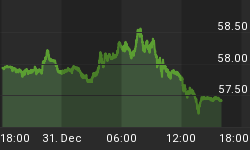The fact that signs of growing inflation have coincided with a strengthening dollar has led many to the erroneous conclusion that higher inflation is somehow good for the dollar. However, a proper understanding of inflation reveals this to be impossible.
The operative word in "inflation" is "inflate." To inflate means to expand. Properly defined, "inflation" is an expansion of the supply of money and credit. Deflation, the opposite of "inflation," is therefore a contraction of same. So when the Fed expands (inflates) the money supply, or expands (inflates) credit, it creates inflation. One of the results of inflation is that prices rise, be they asset prices or consumer prices. When it is the former no one seems to care, but when it is the latter, suddenly some people begin to mind. Note that prices do not expand and contract, they rise and fall. So rising prices are not inflation, they merely result from inflation.
The reason that inflation causes prices to rise is quite simple; in fact, it is basic supply and demand. As the supply of money increases in aggregate, the value of each unit of money decreases by the same percentage. All else being equal, prices will have to rise to reflect the reduced value of currency. Of course, rarely does all else remain equal. In free market economies, productivity generally increases the supply of consumer goods as well, making the impact of inflation, as judged by its effects on consumer prices, harder to detect. In some cases, inflation actually prevents consumer prices from falling. But in all cases, inflation results in consumer prices being higher then otherwise would have been the case in its absence.
So if inflation implies a reduction in the value of the dollar, why do currency traders react to stronger indications of inflation by buying dollars? On the surface it appears as if this is yet another conundrum. The actual explanation however is quite simple. It is not that currency traders believe that inflation is good for the dollar, on the contrary, they understand just how bad it is. As a result, they are confident that the Fed will take decisive action to contain it. It is in anticipation of those actions that traders buy dollars, in effect betting that the Fed will take aggressive action, in the form of interest rates increase, to assure that "nascent" inflationary pressures never materialize.
However, this misplaced confidence in the Fed, besides being complexly undeserved, ignores just how far behind the inflation curve the fed already is. After years of denying the threat, reluctantly admitting the obvious hardly constitutes decisive action. Currency speculators, convinced that the Fed is prepared to nip an incipient inflation threat in the bud, have neglected to notice that inflation's seeds have already matured into a full grown tree. The time to "nip it in the bud" has long since past, and this "mighty oak" will not fall with 1/4 point rate hikes. As a result of its own incompetence, the Fed now needs a much bigger ax, and will have to swing it much harder.
However, as I have repeatedly written in the past, the Fed can not bring down the inflation tree, without simultaneously bringing down the entire U.S. economy, which at present is comfortably resting in its extended branches. As a result, the Fed's inflation bark (no pun intended), will always be worse than its inflation bite. Once currency traders figure this out, bad news on inflation will once again be reacted to as being bad news for the dollar.
















